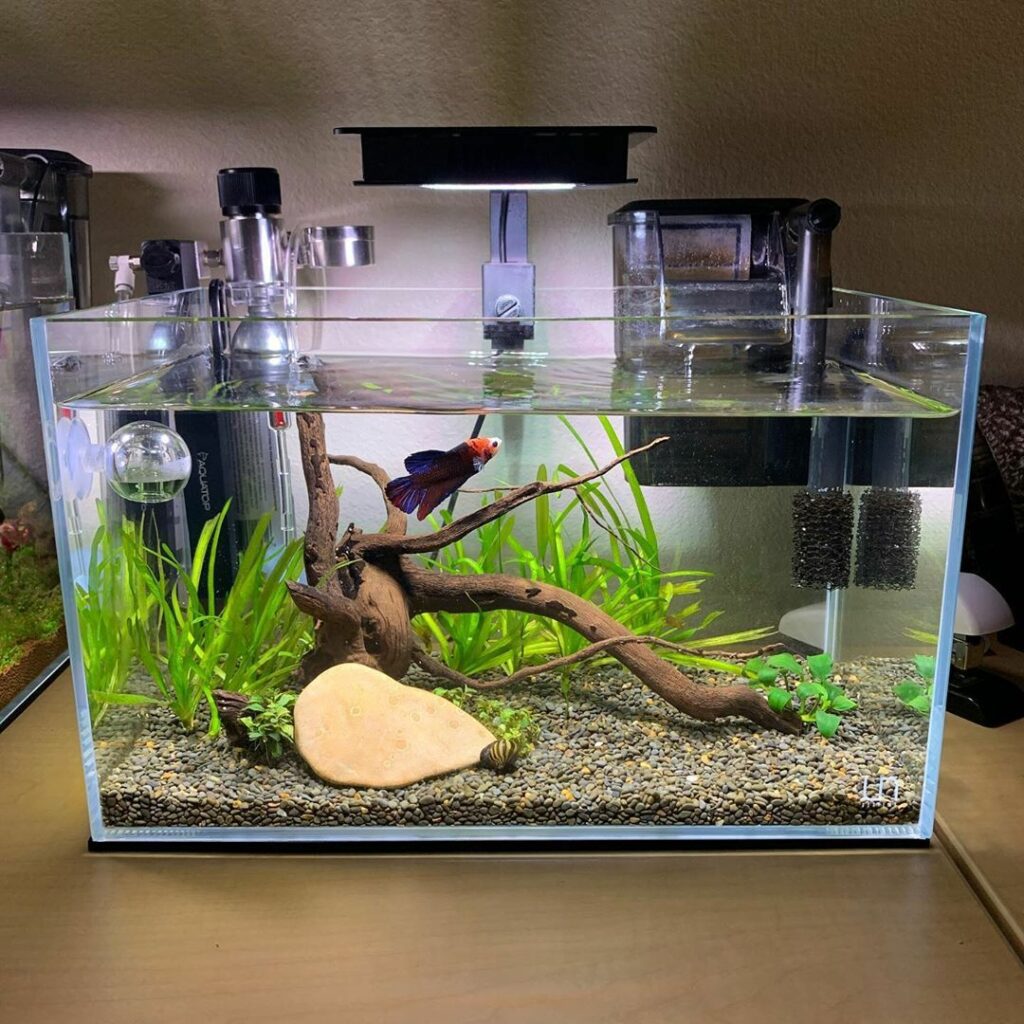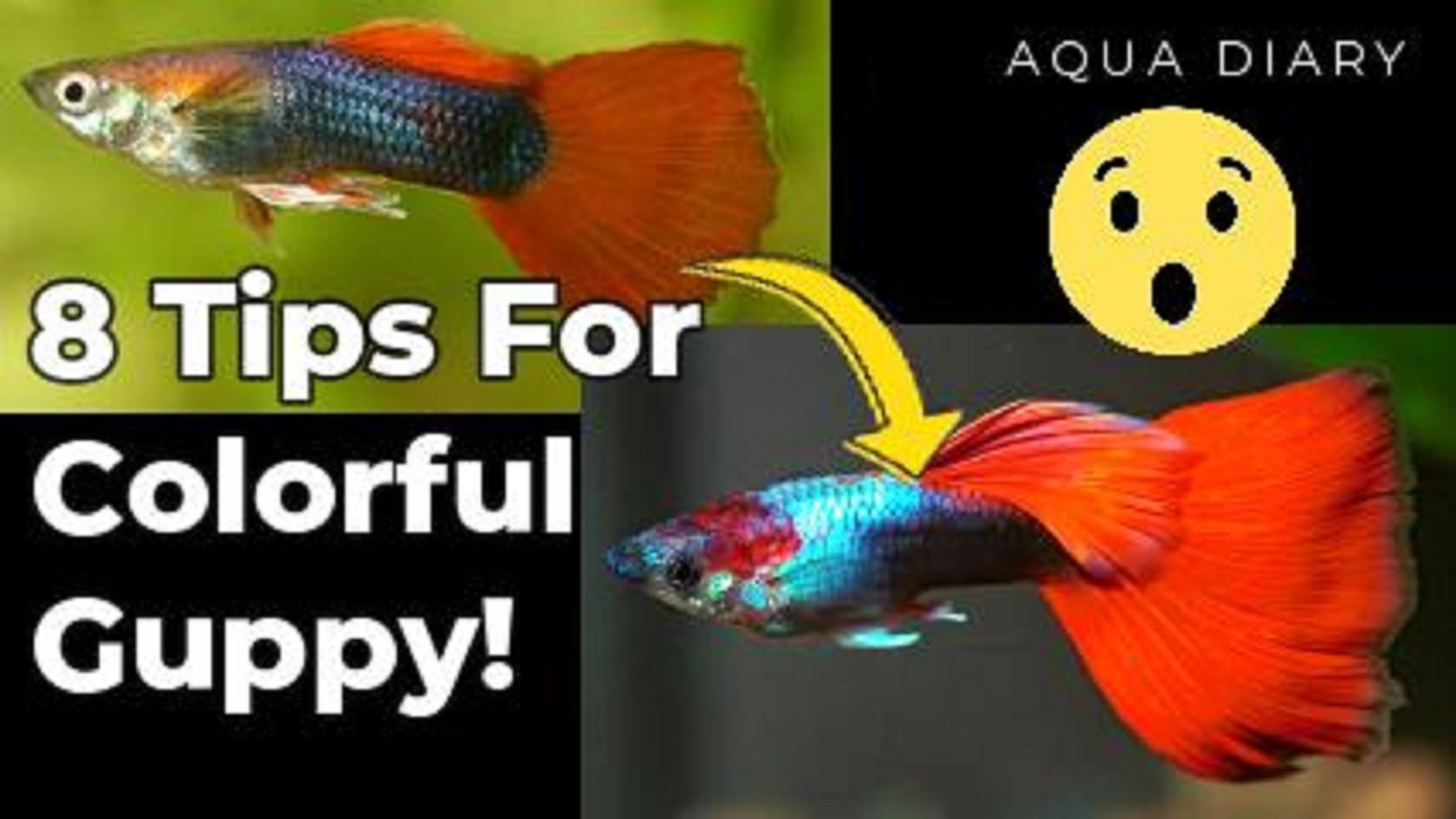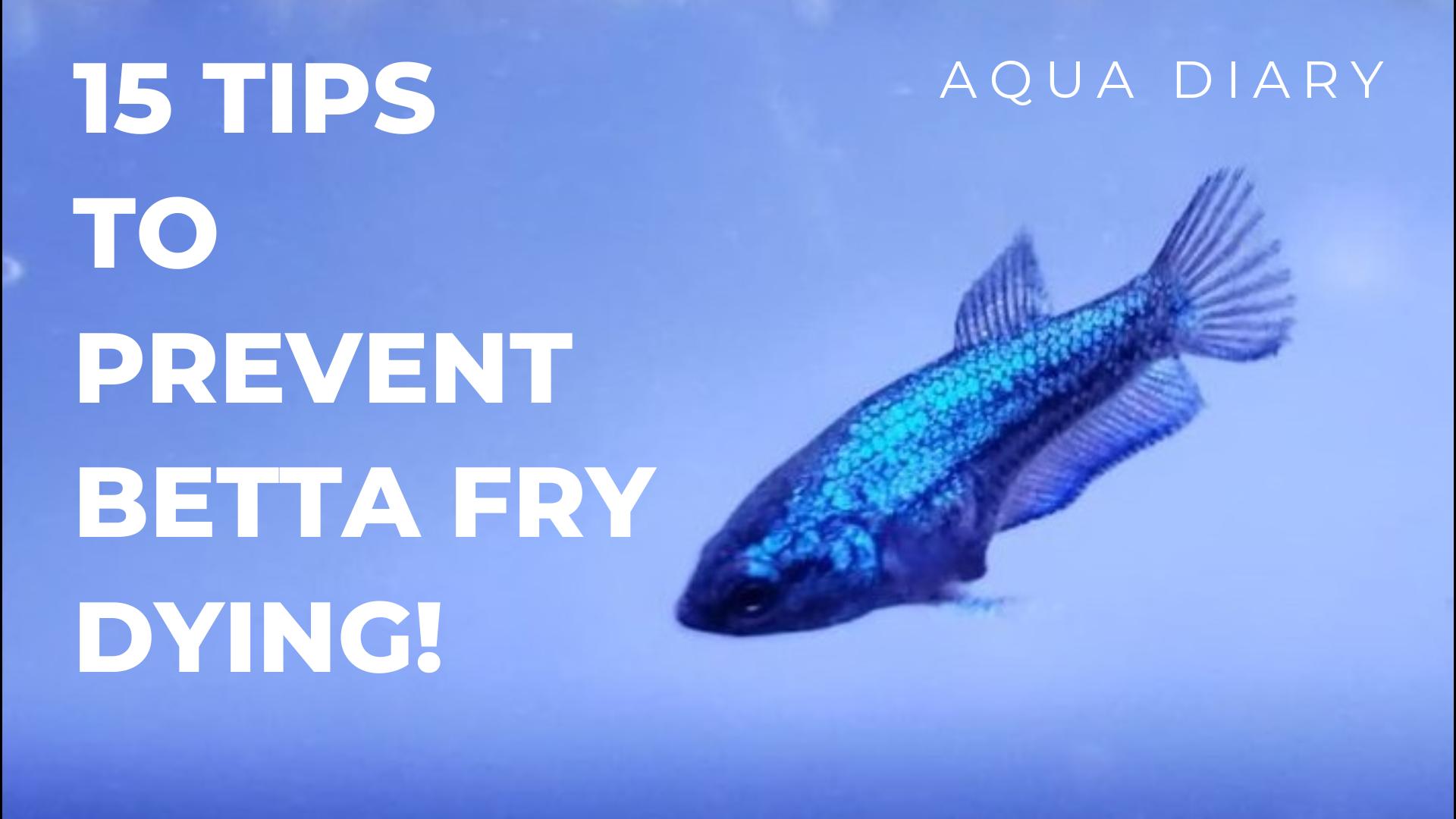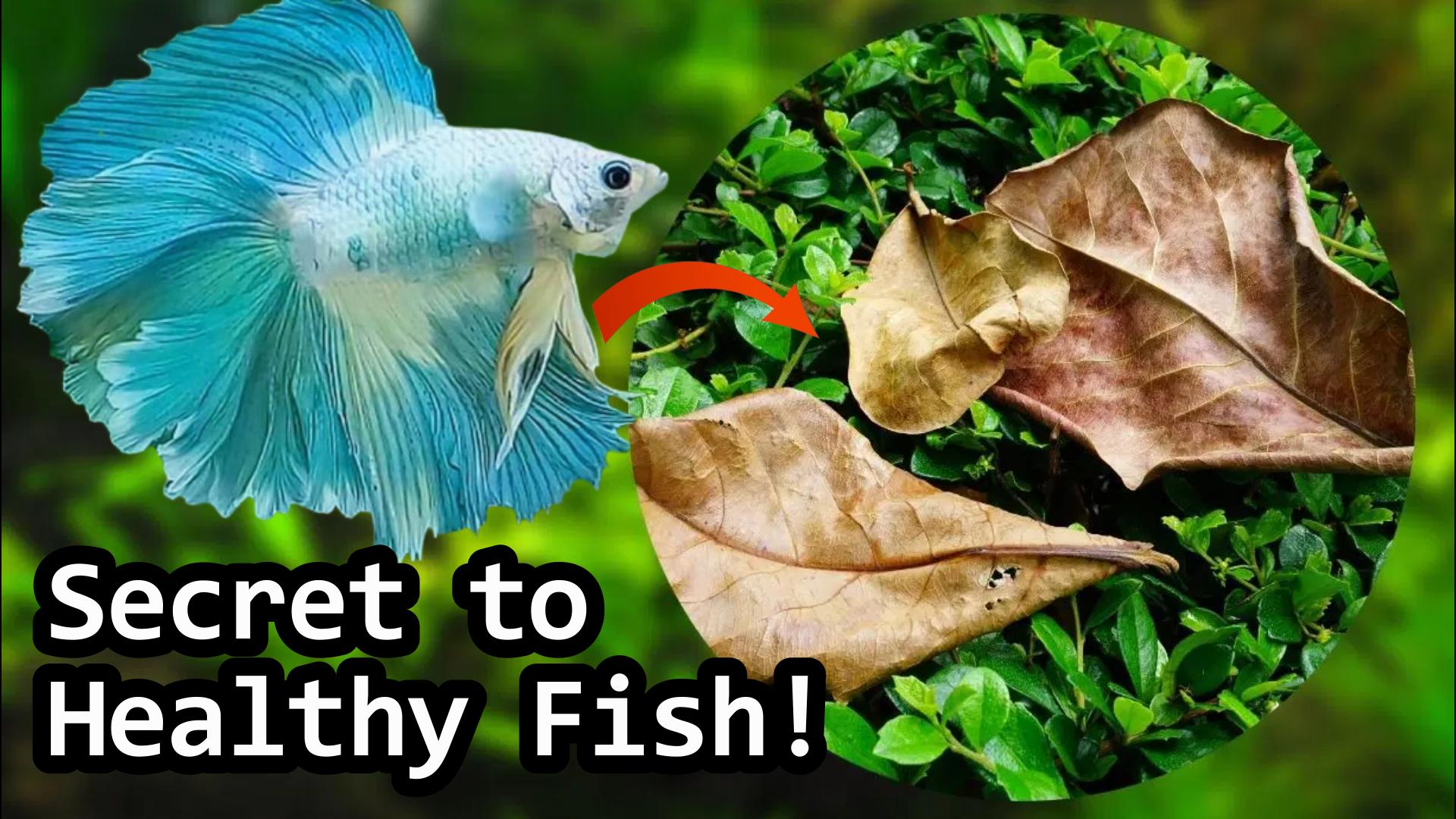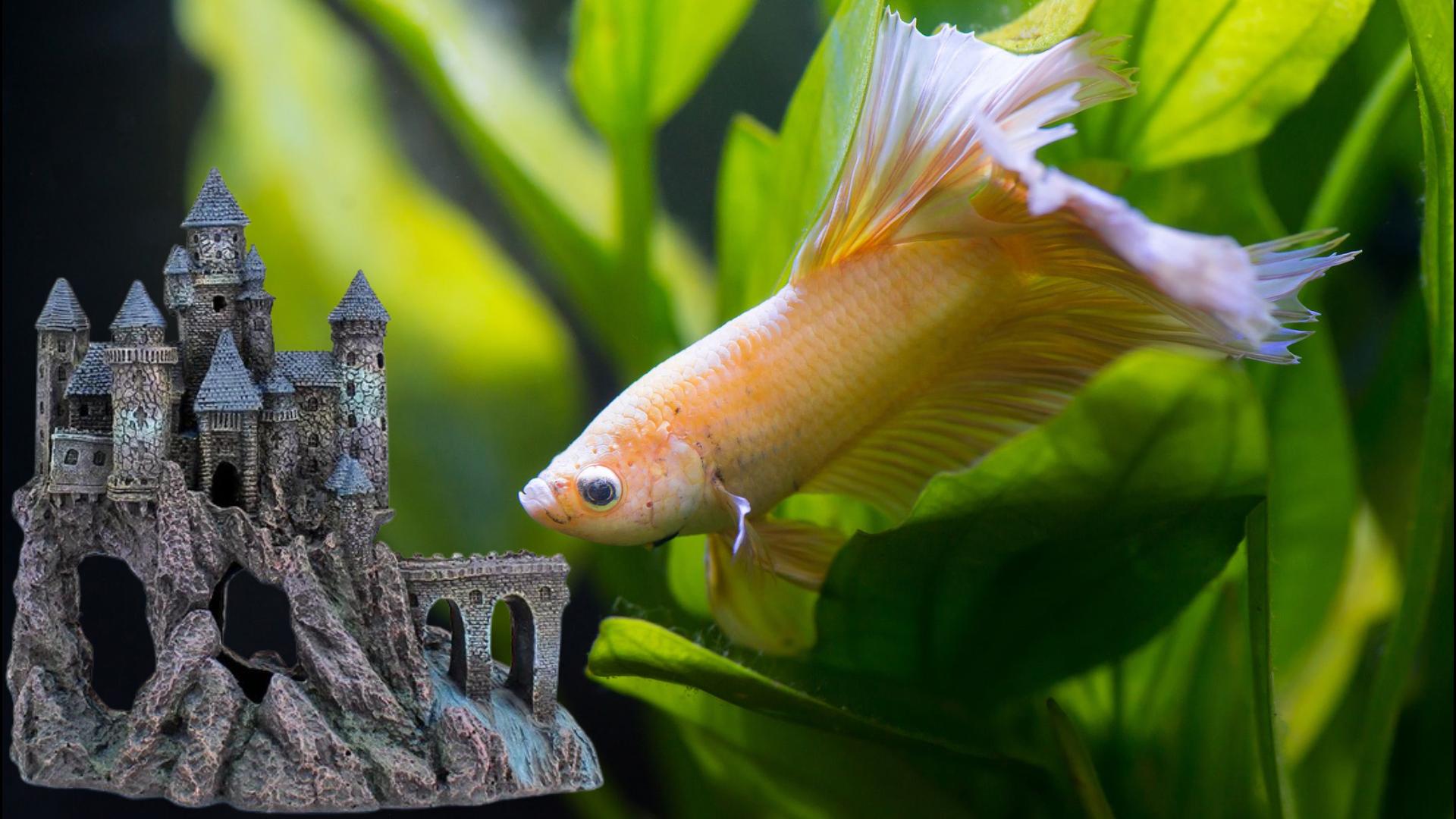This is not just another complicated Betta Fish Tank setup or guide blog. If you are a Newbie and like to know the all tips and tricks you need for buying and setting up the tank, you picked the right page. We have tons of pro tips to cover! So fasten your seat belt & get started.
Betta Fish are smart and intelligent creatures, They prefer to live in a beautiful setting with lots of plants which is closer to their natural environment. Betta fish are most favorite among the freshwater fishes. because of their beauty, colors, and magnificent fins, they do deserve a home where they can thrive and be happy. Adding a few lovely Betta Fish tank decorations can lift the fish’s spirits and enhance the aquarium’s aesthetic appeal.
Here are the things you must know before buying your first Betta!
#1. Choosing Betta Tank – Betta fish Tank setup
Yes, Size really Matters for the Betta tank. Bettas are often kept in tiny plastic bowls, which is not ideal. So don’t get an idea from pet-store betta containers; it’s just for selling purposes. Keeping them in a small container will make them sick and have a miserable life. Don’t do that unless you think of yourself as Jim Carrey Ace Ventura who knows everything about animals. LOL! (Blog edit note: Please add a picture from Ace Ventura)
A good rule of thumb recommended by multiple sources is three gallons of water per inch of fish. Betta fish tend to be 1-2 inches long so make sure to take a look at your fish and find the right-sized tank to accommodate its size. But that’s not what you want; you want a betta that’s content and thrives in your home. We recommend at least 3-5 gallons based on your betta size, preferably much larger.
#2. Picking Tank Gravel – Betta fish Tank setup
Aquarium gravel makes the tank more attractive, and it comes in a variety of colors and sizes, from tiny pebbles and sand to large river rocks. Gravels stock the waste and other things to avoid water getting contaminated. Gravels offer home for beneficial bacteria which are necessary to eliminate waste from the fish, leftover food, and plant debris.
The bacteria can live without a comfy gravel bed, but they might not grow in sufficient quantities to keep the aquarium safe for your fish. Make sure to rinse Gravel with cool running water to remove dust which could clog your filter. Don’t use soap to clean Gravel. It may end up killing your betta. Avoid picking gravels which are sharp edges even its small; smooth gravels are better. Because Betta fins are very sensitive; sharp edges can easily damage the fins. You’ll need two inches of gravel if you’re using live plants because they won’t root otherwise. One inch of gravel works for fake plants.
#3. Do you need a Filter?
Yes, you need a filter unless you decide to clean and change the water every other day like betta farms in Asia. Having a filter can reduce the amount of disease-causing bacteria, and food waste in your tank by using a filter to help keep it clean. Bettas can’t swim against strong currents because of their long, flowing fins. Therefore, you must use a ‘gentle’ filter.
Look for a filter that lets you control the amount of water that passes through it. As a result, you’ll know that you can generate the best possible currents. Use a filter with a GPH four times greater than your tank’s size to get the best filtration.
#4. Tank Heater – Betta fish Tank setup
Bettas are native to Thailand’s tropical waters, so you’ll need to invest in a heater. 78-82 degrees Fahrenheit is a good temperature range for a fully submersible heater. Checking tank temperature is easy as well. Diseases like Ich can spread if the temperature drops too low. If you set it too high, your Betta’s will age soon. Select a heater with a thermostat to make it simple to keep an eye on the temperature.
Also, heater readouts aren’t always correct, so always use a separate thermometer. If you are living in cold states of the USA or other countries, I would recommend to Heater setup that auto starts when temp goes low in the tank. This will avoid manual on & off for the heater during winter days.
#5. Picking the right Water.
Never put your Betta fish in the water straight from the tap. Tap water may look and taste fresh and clean to us, but it often contains chemicals that keep it sparkling and pathogen-free. You should use them filtered and cleaned.
To ensure your Betta’s tank water is optimal, using a water conditioner is another effective method. Water conditioners are budget-friendly and specially designed to create an ideal environment for your fish. If you’re using city water, it’s advisable to employ a water conditioner to ensure the Betta’s tank maintains the right conditions, ideally with a pH level between 6.5 and 7.5. Testing strips for Betta water quality are available for your convenience. Although bottled water is generally soft, it may contain impurities like arsenic and toxins. It’s a viable choice for new setups, particularly if your tap water is too hard for Betta fish. When filling the tank, use a plate atop the gravel to prevent disturbing it. Leave about an inch of space at the tank’s top to allow your Betta to breathe comfortably and prevent any risk of jumping out.
#6. Plants and Decorations For Your Betta.

Having different plants and caves in your tank brings a lively environment for Bettas. Betta loves plenty of shade, hiding spots, and relaxing places in the tank. Bettas like to relax on the leaves which helps them to reach the top quickly for a bubble. It’s critical that you inspect your ornaments for any potential snags or tears in your Betta’s fins before putting them in the tank. If you thinking of fake plants, use silk ones and not plastic ones to keep your Betta fins safe and healthy to avoid damage.
Many aquatic plants are easy to care for and don’t need a lot of light to live, making them ideal for beginners. Some easy maintenance plants for beginner fish keepers are Java Moss, Amazon Sword, Hornwort, Anopias, Java Fern, Dwarf water lettuce, and Pygmy chain sword. Do check them out.
#7. Add Neutralizer and Perform a Fishless Cycle.
If you’ve used tap water to fill your tank, it’s likely to be chlorinated. Remove the chlorine by mixing in some neutralizer. Climatic acid will prevent you from completing the fishless cycle, which is critical. When you add your Betta, it will die if you don’t do this first. The humane way to use the Nitrogen Cycle is to use a fishless cycle. Enabling the toxic ammonia to become toxic nitrite, and then toxic nitrite to become nitrates (non-toxic). As a result, you must complete this step in its entirety. In addition, the beneficial bacteria will help your fish’s environment by removing waste from it.
#8. Betta Fish need some Rocks.
Bettas like to rest and hunt on rocks, so only use smooth rocks in your aquarium. Rocks with sharp edges or rough textures (like lava rock) can rip the Betta’s fins, and you don’t want that. Use aquarium-grade glue if you plan on stacking the rocks into a design. If you do this, make sure the rocks are secure and won’t move.
Resin or plastic is most commonly found in pet store rocks. Rocks found in the natural environment are a good choice, but make sure to clean them well and No Chemicals or toxins, as well as parasites or fungi, may be present.
#9. Other Supplies & Tips – Betta fish Tank setup
Don’t forget to buy a dechlorinated to remove the water’s toxic chlorine and a siphon for easy aquarium cleaning, in addition to the supplies going inside the tank. Purchase aquarium water test strips to help you keep track of how often you should clean the tank. Proper lighting system that enriches the appearance of your betta tank. Also, high-intensity lights will stress out Betta. Be cautious! Weekly partial water change is also a nice tip to consider. Never release betta to the tank with the water you received from the store. Always keep a betta in a separate container for some time and slowly release it to the tank preferably after 24 hours of tank setup.
I can’t stop talking about feeding betta which is also a crucial part of keeping healthy & happy betta. Purchase the right Betta food very important part of betta keeping. Also, it’s extremely important not to overfeed your Betta. Use tweezers to part the right amount of food.
That’s why we have created awesome content about betta food and its nutrition needs. Please check out our blog home page to know more. What are the thoughts we missed to cover? Let us know in the comment section below.

